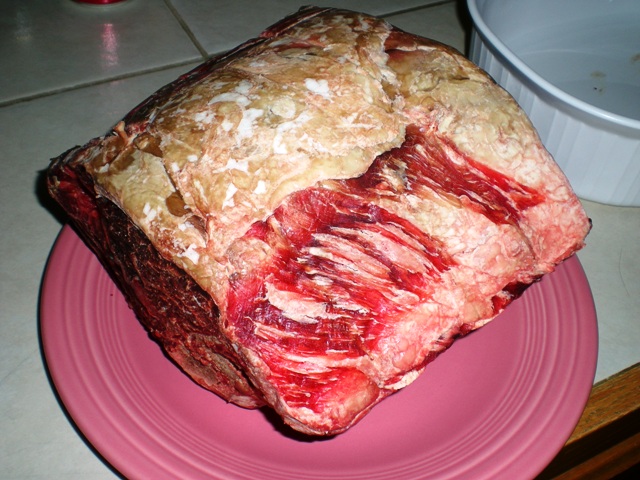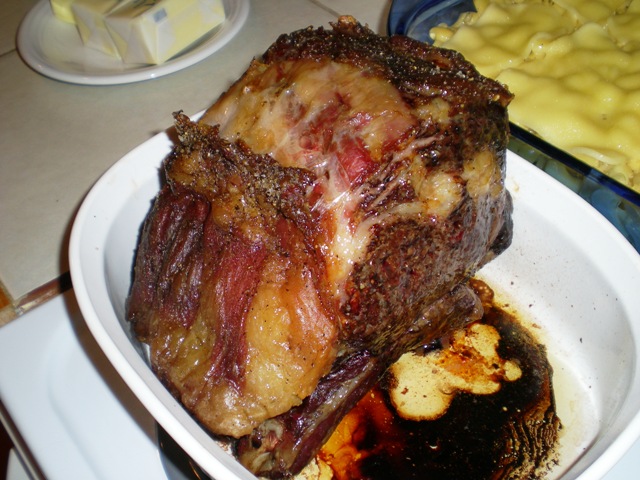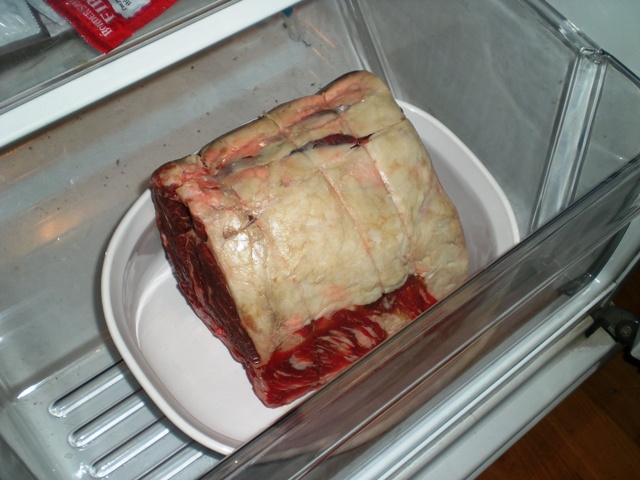I mentioned before that Left 4 Dead and Dead Space were worth your hard earned dollars. A number of online deals are available for these and other titles.
Yes, I am pimping my own industry in a down economy. I’m ok with that.
I mentioned before that Left 4 Dead and Dead Space were worth your hard earned dollars. A number of online deals are available for these and other titles.
Yes, I am pimping my own industry in a down economy. I’m ok with that.
Continuing my effort to document how I cook stuff so I can remember how to make it consistently here is another recipe I’ve started doing regularly.
Rochto and I are asparagus fiends. I always did mine the tried and true awesome way of a couple tablespoons of olive oil and salt and pepper in a sauté dish and cook to where it’s al dente and a beautiful bright green. Recently I got creative.
Ingredients:
1 pound long stalk green asparagus
1/4 cup olive oil
2 tablespoons fig or vanilla or lavender infused sweet balsamic vinegar
1 teaspoon cracked black pepper
1 teaspoon sea salt
Not many people realize that you don’t cook the whole asparagus stalk. I mean, you can if you want. But the bud down to the natural breakpoint is the good part. Take each stalk and grasping at the base of the bud’s tip, and the other end, bend the stalk till it breaks. So do that for each stalk. If the stalks are super thin (my favorite actually) you can cheat and cut the top third or so off for cooking. Preheat the oven to 300 degrees.
In a shallow baking dish combine the olive oil, salt, pepper, and vinegar and asparagus. Toss everything so that the asparagus is evenly coated and laying relatively flat in the dish. Toss it in the oven for 12-15 minutes. At the 15 minute mark, take it out and toss the asparagus again to recoat everything, then crank the oven to broil >500 degrees and blast the asparagus for 3-4 minutes. This is going to heat the olive oil to splatter level so be careful when you tend to it. At the end the tips and parts of the stalk should be very lightly blackened. Remove, set aside and let cool.
You end up with a lightly crunchy texture but the exterior has an awesome roasted/salty/tangy/sweet flavor that accentuates the natural flavor of the asparagus. It’s become my normal way to make it and it’s awesome+1. Enjoy!
I do this to myself way too much. I choose a bold new never-before-tried thing to cook when it’s a big holiday and I have guests. Then I fret the entire time over whether or not I can pull it off.
Thankfully this worked out. Tonight we enjoyed large cuts of pretty much perfect Prime Rib. Here’s how you do it:
Ingredients:
1 5-8 pound USDA Choice or Prime standing rib roast
Fresh pepper
Sea Salt
Olive oil
1/4 cup water
1/4 cup dry white wine
First, dry age the roast. When it’s done it will look a lot like this:

Once aged, trim off the leathery and any moldy parts. Take a small amount of olive oil and coat the entire roast. You can use extra light for this but I personally love the flavor of olive oil so I used regular. Rub the roast all over with sea salt and the fresh pepper.
In a small-enough-to-hold-the-roast roasting pan, combine the water and white wine and set the roast rib side down in the pan. Place in oven and roast for five hours @ 200 degrees or until the internal roast temperature is 120 degrees. Once the roast is at 120 degrees in the center, crank up the oven to 500 degrees for 15 minutes. Remove the roast. It should look something like this:

Let the roast sit for no less than 30 minutes. Carve it off the bones. Then carve out steaks. You should end up with a fantastic juicy cut of prime rib that, depending on the quality of meat you started with, is almost indistinguishable from an expensive chophouse cut of rib. Enjoy!
I’ve written before about my yearly tradition of doing different things each thanksgiving food wise.
This year I’ll be doing my quail recipe but will also be doing a prime rib roast. I’m very excited about this because it’s the first time I’ve gotten the roast far in advance to dry age it in the fridge. Aging the meat allows for natural enzymes to break down the muscle tissue of the meat. In addition the meat becomes dehydrated slowly, leaving behind a much more flavorful steak.
Now, there’s a lot of opinion in general about dry aging your meat yourself. Almost all the meat you’re going to get at retail grocery stores is wet aged. That means basically it’s been sitting in a vacuum sealed crypack in a fridge in with its own blood. Yes, that helps, and it reduces the volume of meat lost to dehydration and having to trim the aged cut to remove the non-edible bits. If you buy your meat from a specialty butcher you can often request they do the dry aging themselves. This is preferable because aging meat actually requires a relatively specialized environment, with specific humidity and air flow for optimal results. However I’ve been told by numerous cooks you can achieve the desired effect yourself if you’re willing to go through the trouble.
So I’m going to try it! WARNING: doing this you accept the risk that you’re going to ruin a perfectly good (and expensive!)piece of meat. If your fridge isn’t clean or there’s something oderous in it like onions or something the meat might pick that up as it ages.
We start off with a 5.5 pound standing USDA choice rib roast. Prime would be better, but since it’s pretty hard to find, Choice works. You can get this from a butcher or Costco. It’s very rare to find a decent cut quality from a major chain unless it’s a boutique one like Whole Foods. I’ve been advised not to try this with USDA Select so know your meats!
Unwrap the meat and rinse it and pat it dry. Find a nice dish that you can keep it in, but it’s going to age uncovered. Again there is some debate about aging it yourself whether you cover it in a cloth or not, we’re going commando for this one. My fridge has seperate temperature and other controls. So we’re going to place the roast in the meat storage drawer at the bottom of the fridge, and set that temperature range for somewhere between 36-40 degrees. Put it in, close the drawer.

Now it sits until Thursday morning. I’ll check on it of course during that time to remove drippings trade out the dish, etc. On Thursday morning I’ll remove it, then it has to have all the dried bits and gunk trimmed off of it. I’ll photo that process as well. Then it goes into the oven for a slow roast at 200 or 225. Once it’s complete and I’ve verified I didn’t ruin it I’ll write this one up as a recipe file.
I hope it turns out like I think it might!
I spent most of late 2006 and early 2007 traveling domesticly and international working to try and convince people that some of the security foundations we had placed in Windows Vista were important enough to keep in the product, despite some third parties trying to maintain that any attempt to correct the problems of the past was infringing on the opportunity to capitalize on those mistakes.
I spent a lot of time in airplanes. I did not do this because I was paid to, to be clear. I fervently believed then and believe now that the security underpinnings of Windows Vista were state of the art at the time and deserved to be included in the product to protect customers.
But this story isn’t about that. It instead involves the image of a young Labrador retriever puppy, running carefree on the beach.
What?
Yeah really. I spend a lot of time on my "record scratch" segues.
I left one meeting where an entity opened the meeting with: "We will work tirelessly to see you are eventually broken up and your products banned. Now please give us your presentation" utterly crushed.
I was away from my dogs and my wife for 20 days out of the past 30, and the very thought of shipping Windows Vista was suddenly up in the air because third parties were actively complaining about security features in the product.
My luggage was heavy, my ideals in trying to make people understand we had truly turned a corner in security were not doing so well. There was a lot of investment that had been made by others in trying to convince people that any effort on our part in trying to make our products more secure was some diabolical plan to crush any and all competition. It seems idiotic now, but at the time it was a real argument people were having.
I trudged by World of Whiskies in Heathrow and bought a 17 year Bowmore Islay both out of love and pure despair. As I passed by the seafood and sushi open bar at Terminal 4, a book caught my eye. There was a blond lab retriever pup with a red bow in his mouth. I stopped, gobsmacked, and missed my dogs and home and Rochto so much it was a tangible thing in my chest. Something I could, with enough effort, cough out.
Theoretically, should my plane not crash, I was a mere 12 hours from home. But I was perplexed by being confronted by a so-simple and homesick inducing image that I bought the book: Marley and Me.
British Airways is practically the only way you will get me up in the air to fly overseas. Due to my frequent overseas flights at that time I was allowed business class, which had introduced a lie flat bed and all you can eat movies. I ignored everything to read that book.
As many people know from reading this blog I love very deeply my golden retrievers and I read in this story of a lovable but not-quite-aware-of-his-own-weight dog the story of my own pets. In the humorous telling of the tale, my wife’s patience not just with them but with me as well. I consumed the book on the entire flight and reached the end struggling not to bawl out loud like a gassy baby lest the crew suspect my mental state. (Spoiler? Marley lives a long and wonderful life)
I bring all this up because I just accidentally caught that they have made the book into a movie. I downloaded the preview which features a young pup Marley running along a beach (a descriptive scene from the book) with his owners haplessly running in chase, screaming his name. It nearly brought tears to my eyes not just because I know how the story (wonderfully, gently) ends, but because it evoked my most precious memories of my own dogs. Which reminded me ever more, and always such — on this earth:

HAVE.
FUN.
Bless you Marley.